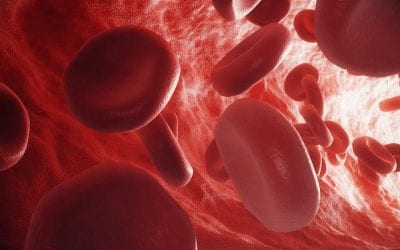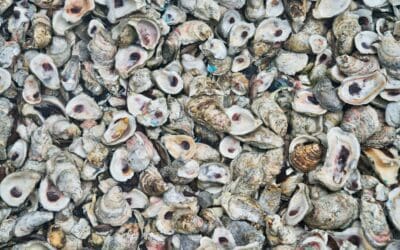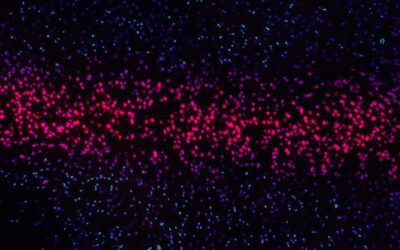
Small Animal Research
The RS 2000·Q2 offers a robust solution for researchers in small animal, stem cell, cancer, and immunology fields. Powered by our 4th generation QUASTAR 2 X-ray platform, it outperforms traditional point source tubes, ensuring superior symmetry, flatness, penetration, and dose uniformity. Delivering energy levels comparable to 320kV tubes, the RS 2000·Q2 also features optional imaging and configurable filters. With RADPlus™ Research Tools designed for enhanced performance and animal comfort, this system runs on a standard 120V outlet and is equipped with caster wheels for easy mobility, making it ideal for any lab environment.
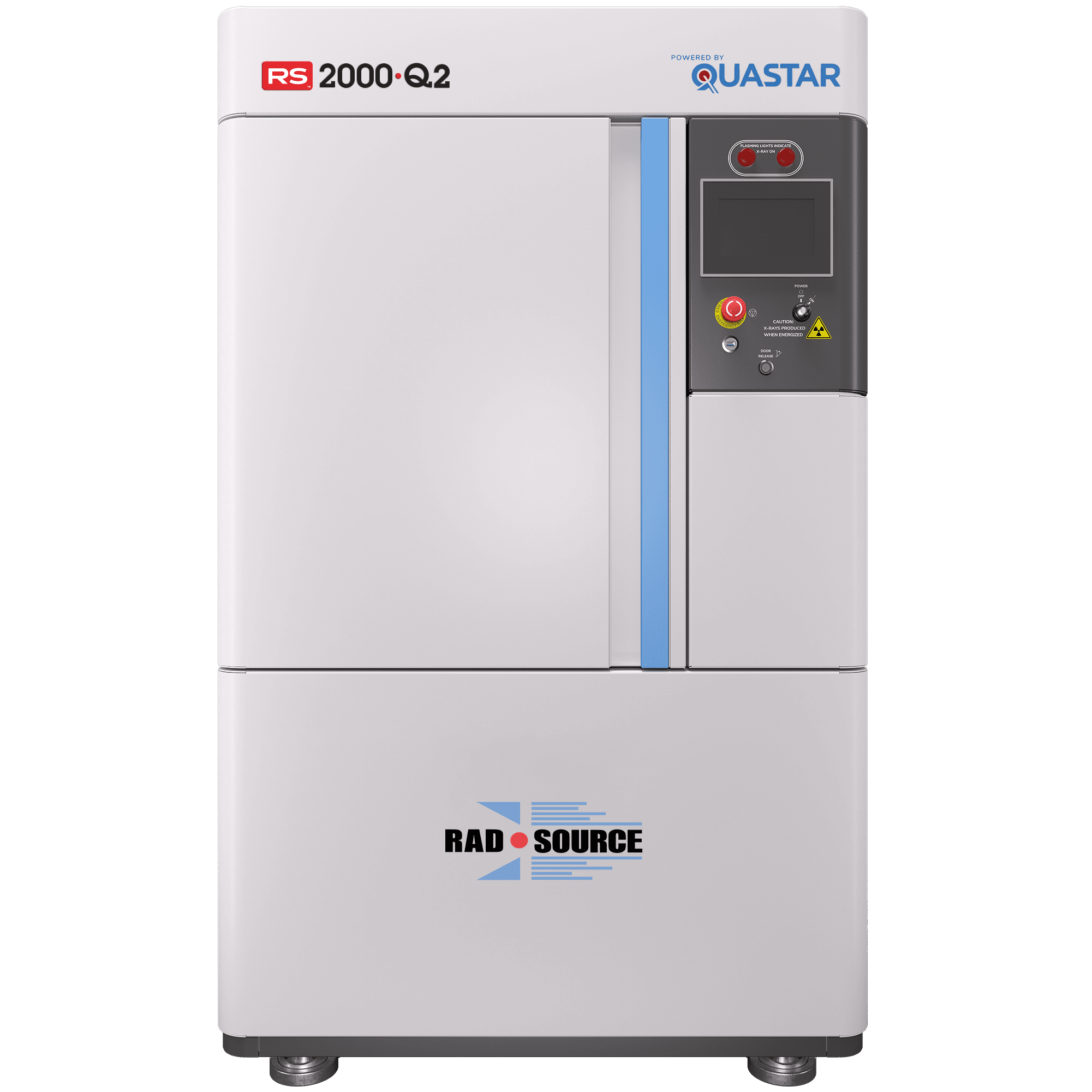
The New Industry Standard for Small Animal Irradiation
The RS 2000·Q2 is driven by the power of our 4th generation QUASTAR 2 X-ray platform, setting a new standard in research for small animal, stem cell, cancer, and immunology studies. This advanced tube technology outclasses traditional point source tubes by delivering unmatched symmetry, flatness, penetration, and dose uniformity. Offering energy levels comparable to 320kV tubes, QUASTAR 2 ensures precision and reliability in every use. With optional imaging and configurable filters, the RS 2000·Q2, powered by QUASTAR 2, is designed to elevate both performance and efficiency in the lab.
Proprietary Quastar® Photonic Decontamination™ Technology
To prepare these laboratory animals for these human-simulated experiments, their original immune system needs to be either weakened or completely destroyed and then reconstructed with human immune cells.
This is achieved through the application of ionizing radiation, and our patented x-ray irradiation technology is the gold-standard for this application.

Multi-level Chamber Exposure System
Developed with a three-level height-adjustable tray exposure chamber allowing for flexible specimen placement. The design allows small animals to be irradiated in their cages reducing cross-contamination and providing a less stressful environment.
RADPlus™ Research Solutions
Patented RADPlus research solutions are engineered to reduce stress on the animal while ensuring beam uniformity of 95% or higher and will not cause skin burns to the animal. Small animals are free to roam their cages for a less stressful environment.
Unmatched Quality Service and Support
With more than 1000 irradiator installs in renowned hospitals, universities, pharma, government and life science institutions worldwide, Rad Source is a proven and reliable x-ray manufacturer with unmatched and trusted services.
Equipment
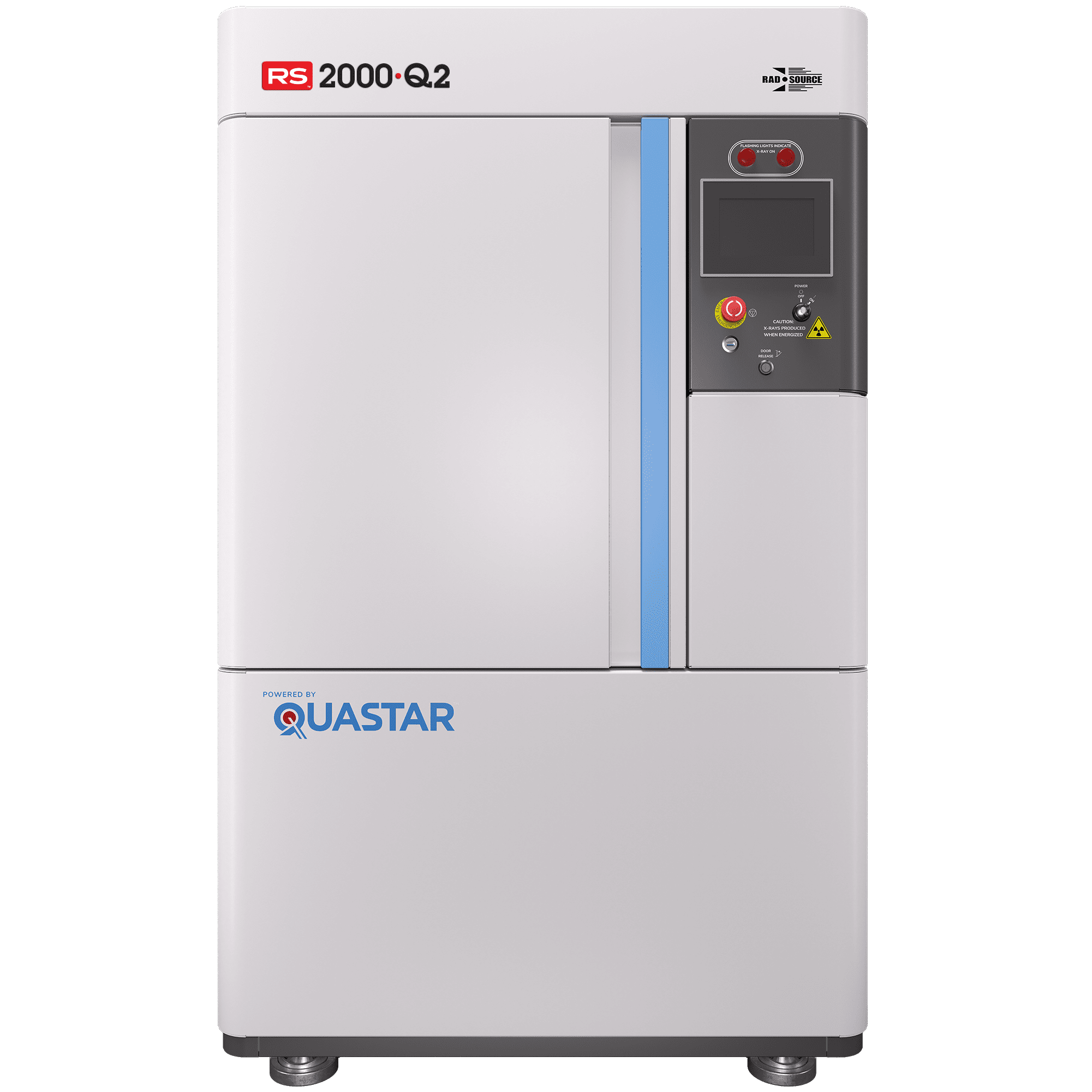
RS 2000·Q2 Biological Irradiator
The RS 2000·Q2 is designed for small animal, stem cell, cancer and immunology research, and various other applications. Its core is powered by our 4th generation QUASTAR 2 X-ray platform, which offers superior performance to 1st generation point source tubes.
- Industry-leading symmetry, flatness, penetration, and dose uniformity
- Effective energy comparable to 320kV point source tubes
- Optional imaging and the ability to configure various types of filters
- RADPlus™ Research Tools enhance performance and animal comfort
- Does not require a chiller and operates on a standard 120 V wall outlet
- Mounted on caster wheels for mobility
Latest News & Studies
Suppression of Radiation-Induced Salivary Gland Dysfunction by IGF-1
AbstractBackground Radiation is a primary or secondary therapeutic modality for treatment of head and neck cancer. A common side effect of irradiation to the neck and neck region is xerostomia caused by salivary gland...
Dose Characterization of the Rad Source 2400 X-Ray Irradiator for Oyster Pasteurization
Wagner JK, Dillon JA, Blythe EK, Ford JR., Department of Nuclear Engineering, Texas A&M University, College Station, TX 77843-3133, USA. jenkoop@gmail.com Abstract: The RS 2400’s cylindrical X-ray source yields dose rates...
Pericytes and Endothelial Precursor Cells: Cellular Interactions and Contributions to Malignancy
Abstract: Tumor vasculature is irregular, abnormal, and essential for tumor growth. Pericytes and endothelial precursor cells (EPC) contribute to the formation of blood vessels under angiogenic conditions. As primary cells in...

